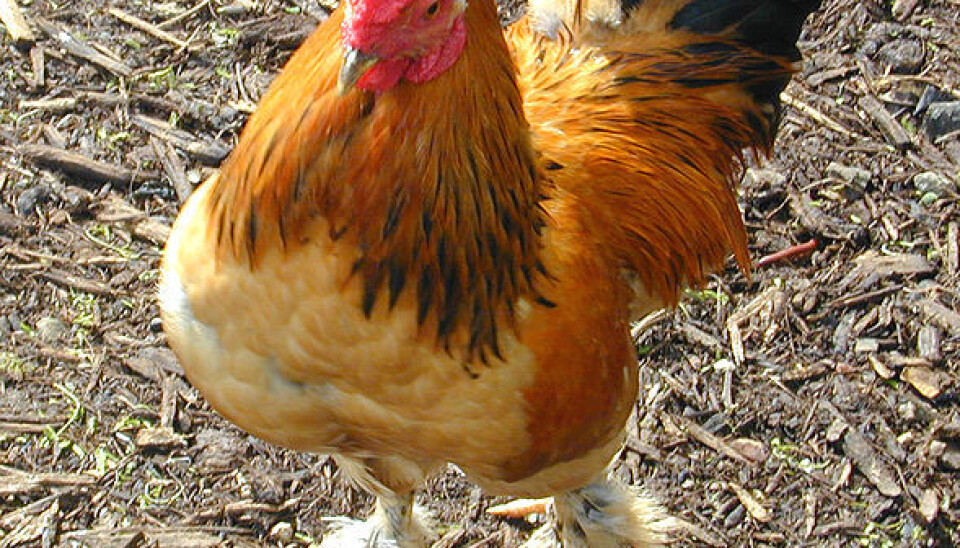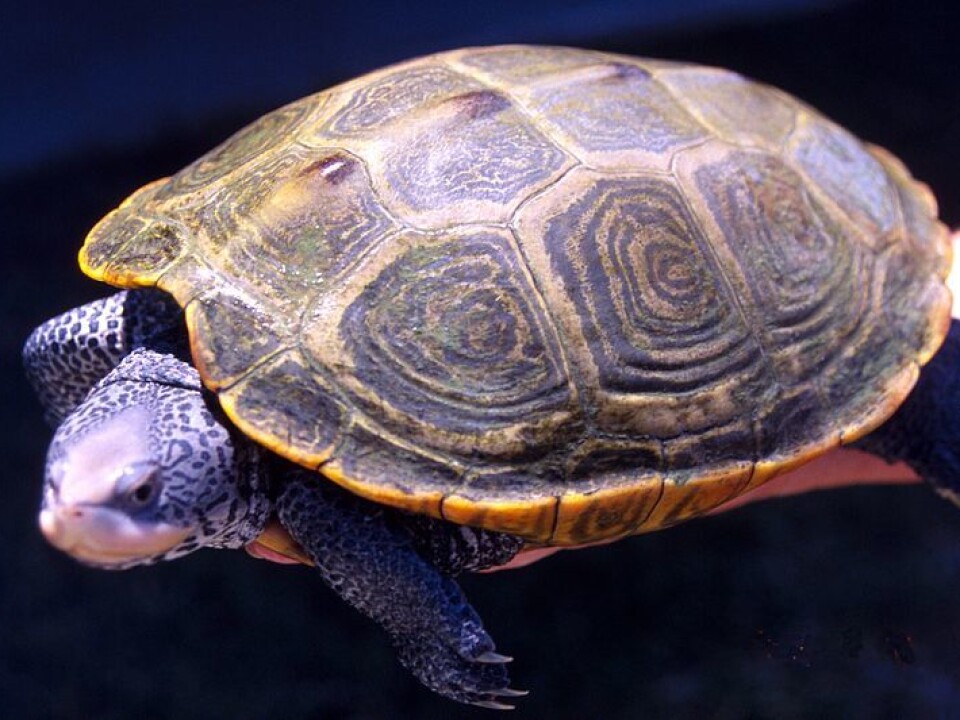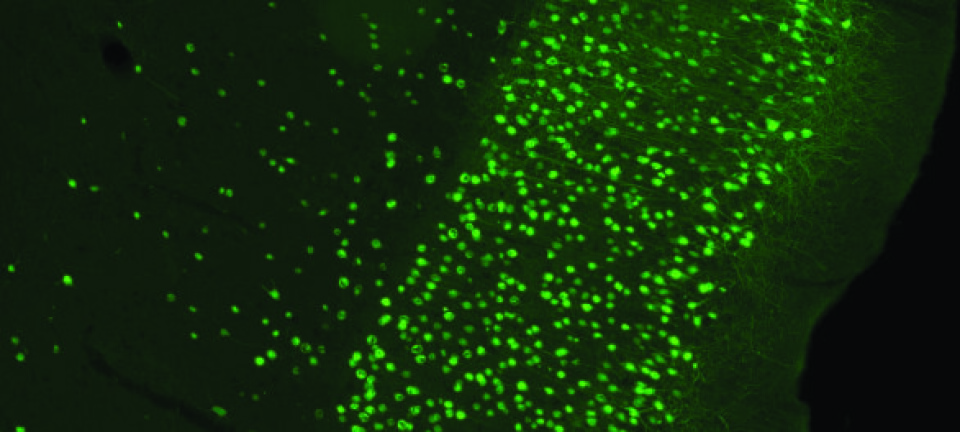
Why do headless chickens run?
The brain does not control all body movements. Some movements are to a great extent controlled by neural networks in the spinal cord. This is why a chicken can run away after you chop its head off. A new study takes a closer look at this strange phenomenon.
If you chop the head off a chicken, it can still run around for a few seconds. The same applies to many other animals, including the turtle, which continues swimming even though its head has come off.
The animals can do this because a neural network in the spinal cord is pre-programmed to direct the muscles in various frequently used movement patterns such as running or swimming.
Despite intense research into how the body, the brain and the nervous system works, scientists still do not have a clear picture of how nerve cells communicate to perform certain movements.
Using headless animals as study participants, a team of researchers from the University of Copenhagen, Denmark, will now try to get a step closer to understanding this phenomenon in their new project ‘Attractor network dynamics in the spinal cord’.

“Our objective is to learn more about how nerve cells function in networks. This will also help us understand the diseases that are the result of dysfunction in these networks,” says Henrik Lindén, a postdoc fellow at the Department of Neuroscience and Pharmacology at the University of Copenhagen, who heads the new project.
Why a turtle can swim without a head
To understand Lindén’s research, we’ll go back to the chicken and the turtle:
The turtle frequently uses swimming movements, so it makes sense for it to have a neural network in the spinal cord pre-programmed to perform swimming movements when the nerve cells are stimulated.
This means that the nerve cells do not need specific signals from the brain to prompt a coordinated activation of the muscles required to perform a swimming stroke.
Our objective is to learn more about how nerve cells function in networks. This will also help us understand the diseases that are the result of dysfunction in these networks.
As long as the neural network is generally stimulated for movement, it is already pre-programmed to activate some specific muscles to perform the swimming strokes in coordination.
This makes it much simpler and easier for the brain to send movement impulses down the spinal cord.
The nervous system is like a golf hole
The network probably does not even need a very specific signal to perform the movement as long as the activation is similar to its preferred input.
The process can be compared with a hole on a golf course, which is surrounded by a hollow that leads all balls down into the hole. If a player hits a ball near the hole, the ball will roll into the hole.
We would like to understand the organisation of these attractor networks. How do the networks store information and perform an action when they are stimulated? And how do the individual nerve cells in the network behave?
The same applies to neural networks. As long as a signal is received somewhere in the network, the network will activate the swimming movements. Scientists call this an ‘attractor network’.
”We would like to understand the organisation of these attractor networks. How do the networks store information and perform an action when they are stimulated? And how do the individual nerve cells in the network behave?” says Lindén.
The turtle’s spine is like the human brain
One part of the project will consist of studying the nerve cells in the turtle’s spine.
A turtle’s spine is a good model system for the nervous system and nerve cells in general.
This means that discoveries about the function of nerve cells in the turtle’s spine are likely to be transferable to the human brain.
”Our memory is also the result of neural networks working together. Certain nerve cell groups are responsible for remembering certain things. Here, one can also imagine that the networks function as an attractor network, which only requires a generic signal to trigger its function – to retrieve stored information.”
The examination of the nerve cells in the turtle’s spine will mainly focus on which signals are being sent between the individual cells, and how these signals affect the entire network.
To measure this, the team will place tiny electrodes on the individual nerve cells and also on groups of hundreds of nerve cells. This will enable the researchers to follow the signals from one nerve cell to the next.
A balance between two types of signal
However, there is a relatively unknown factor in the networks that scientists have yet to fully understand.
Neural networks contain nerve cells that send activating signals to their neighbouring cells, and there are nerve cells that tell their neighbouring cells to remain at rest. But can a cell receive both of these signals at the same time?
The researchers will try to figure out whether the individual cells receive one or the other signal, or whether they receive both signals at the same time. They will also be looking at whether the amount of activation or deactivation signals either keep the system at rest or trigger it to perform the function.
This theory can be compared with a cup with a hole in the bottom, where the signals from the neighbouring cells either say ‘fill the cup’ or ‘empty the cup’. Once the cup is full, the function of the cup/network is triggered.
As long as the signals are balanced, the cup can be almost full and ready to perform its function. Not many signals are therefore required to fill the cup, compared to an empty cup, and this may affect the reaction speed of the network.
“You could regard the network as a balance between conflicting signals. As long as the signals don’t change, the network does not perform its function. But since the network does not require much stimulation to perform its function, this could happen very quickly,” says Lindén.
Computer model of nerve cells
In addition to studying the turtle’s spine, the researchers will also create a computer model to test how a neural network that receives stop and start signals simultaneously organises itself in relation to performing an action.
This computer model will be used to create theories that can be tested in the turtle’s spine, while observations from the turtle’s spine will be used to feed the computer model with data, making its modelling more accurate.
”The advantage with this setup is that the turtle’s spine has a relatively simple nervous system with a clear output in the form of movement,” says Lindén.
“This makes it relatively easy to observe what happens and what does not happen. With this computer model we can gain an understanding of neural networks that is also relevant to the understanding of more complex neural networks such as in the human brain.”
The project is scheduled to last two years.
-------------------
Read the Danish version of this article at videnskab.dk








